- Homepage
- News and Features
- What essential maintenance was allowed on golf courses during the Second World War?
What essential maintenance was allowed on golf courses during the Second World War?
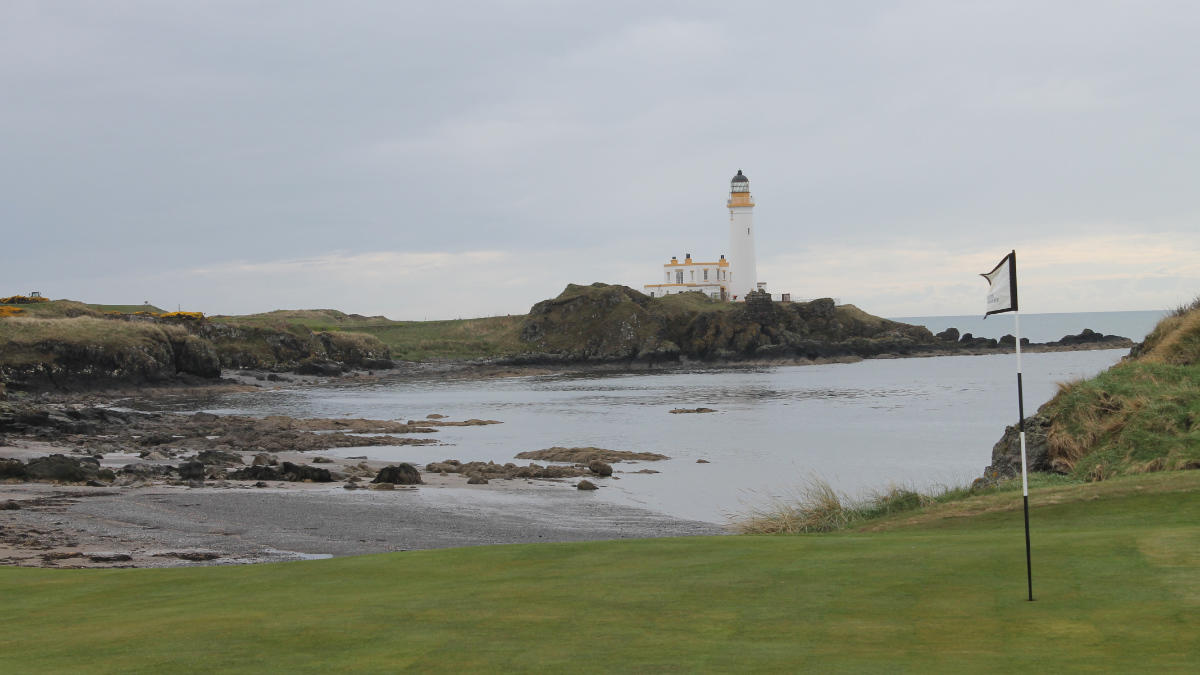
Last year, at the start of the COVID-19 pandemic, BIGGA worked with golf bodies such as The R&A to produce guidance for greenkeepers regarding what work they could do during course closure and lockdown.
That guidance has been updated as our knowledge of the virus has improved. But did you know that 80 years ago greenkeepers faced a very different crisis, that led to appeals for clubs to stay open due to the health benefits of golf and impacted what work could be done to maintain the course?
At the outbreak of the Second World War the Board of Greenkeeping Research (now the STRI) published a War-Time Turf Policy that instructed greenkeepers about what they could do to maintain their courses during wartime.
As BIGGA charts its History of Greenkeepers Associations, the policy has emerged, and it makes for some fascinating and particularly poignant reading considering the problems we’ve overcome over the past year.
War-Time Turf Policy
By R B Ferro, NDA, Chief Advisory Officer, Board of Greenkeeping Research, 1940
Probably every golf club in the British Isles has been affected directly or indirectly by the war. Some will doubtless feel the change consequent upon the reductions in membership and income and indoor and outdoor staff more than others and from correspondence received at the [BOGR] Research Station since the outbreak of hostilities it seems that southern clubs, especially those near London, are more seriously affected than those of the Midlands and North. Even clubs in non-belligerent countries are by no means unaffected.
It may be a truism to say that without a course a golf course could not exist, but in many cases even in peace-time it is doubtful whether the course receives its due share of the income in proportion to expenditure upon other items of club activity. The need for equitable treatment is more essential than ever during war-time.
As a general rule there will be reduced play during hostilities although this will vary with local circumstances and it must be remembered that outdoor recreation, and particularly golf, affords one of the best antidotes to strain aggravated by the war conditions. It does, therefore, behove clubs to maintain their courses in the best condition possible because they have a responsibility to their members and those who are likely to take the game up again in the spring, despite contrary resolutions last autumn, and also in fairness to future generations of golfers. Especially is this so where the courses are easily accessible. No less should the more remote clubs make every endeavour to continue even if it be on a strictly reduced level.
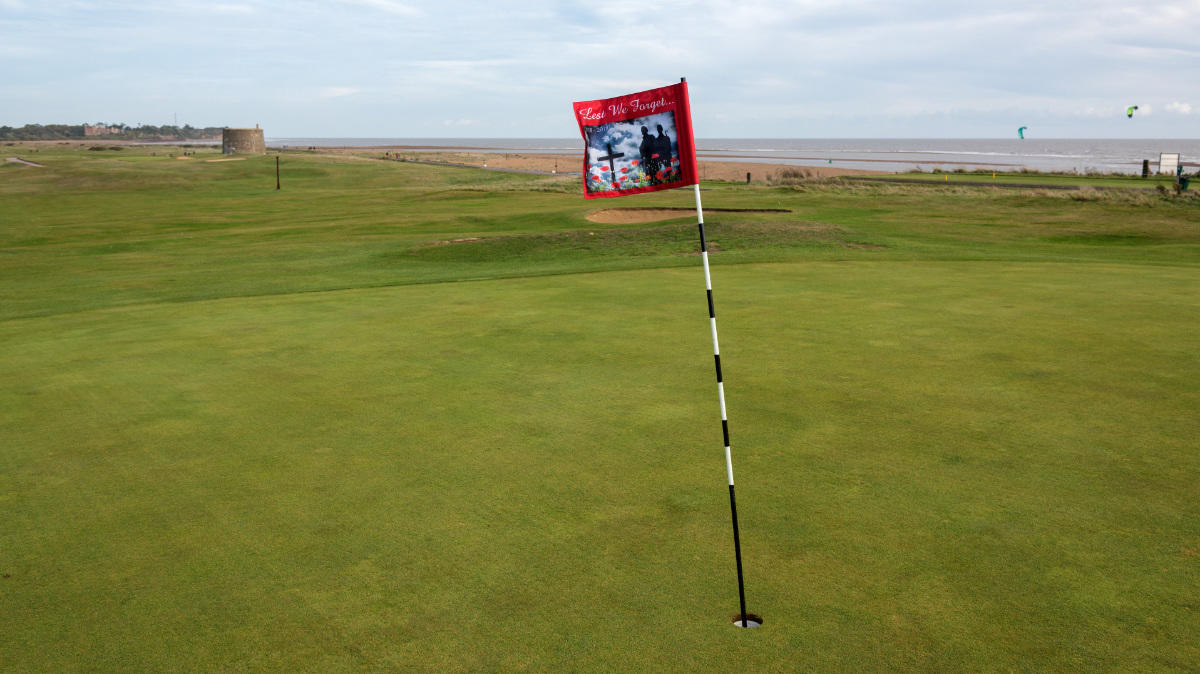
The standards by which turf is judged are to-day very much higher than at the beginning of the Great War. This may be largely attributed to the general dissemination of knowledge, much of which has arisen from the careful and systematic research and advisory work carried out at St Ives, and also the greater keenness shown by greenkeepers. As a consequence deterioration may be much more rapid and blemishes which would have caused little concern 25 years ago will be considered serious faults to-day. For instance, weed invasion is liable to be rapid if control measures are relaxed or general treatment not properly designed, and reconditioning after hostilities may assume serious proportions. Therefore, every club should be sure that the programme of work that is undertaken is the best available for their particular requirements so that it may operate to the ultimate benefit of the club. Because of the difference in turf conditions now compared with 25 years ago emergency measures instituted then will not necessarily meet the situation to-day and it is upon this point that clubs should proceed with the greatest caution.
So far as actual course upkeep is concerned Committees will now be meeting to plan spring and summer operations and the first aim should be to maintain the turf on greens, approaches and fairways in as healthy, weed free and disease free condition as possible and thus to prevent deterioration or at any rate restrict it. Alterations to greens and bunkers and similar non-essential work must be postponed unless the club is in such a fortunate position that restrictions are unnecessary.
All treatments whether manurial or cultural cost money in labour and materials and it must be decided at the outset how much can be spent on the course during the next 12 months; then a plan can be devised spending that money in the most appropriate manner. It is better to allocate a certain sum rather than commence a full scheme of treatment and later find that it will have to be curtailed through lack of funds.
Experiments at St Ives have shown the importance of regular cutting in developing the desired type of fine textured turf and suppressing most weeds. Mowing must be the last operation to be restricted. Other work such as fertiliser dressings must be modified so as to restrict if possible the amount of leaf growth and thus the mowing, but under no circumstances must the turf suffer because of haphazard and irregular cutting. Frequent cutting is better for the turf than infrequent and short better than long, but short infrequent cutting removes the greatest weight of leafage and consequently exerts a severe strain on the plant, necessitating more liberal fertiliser treatment. Thus a saving can be effected by raising the height of cut and reducing somewhat the frequency. Less frequent mowing should not be done at peace-time height.
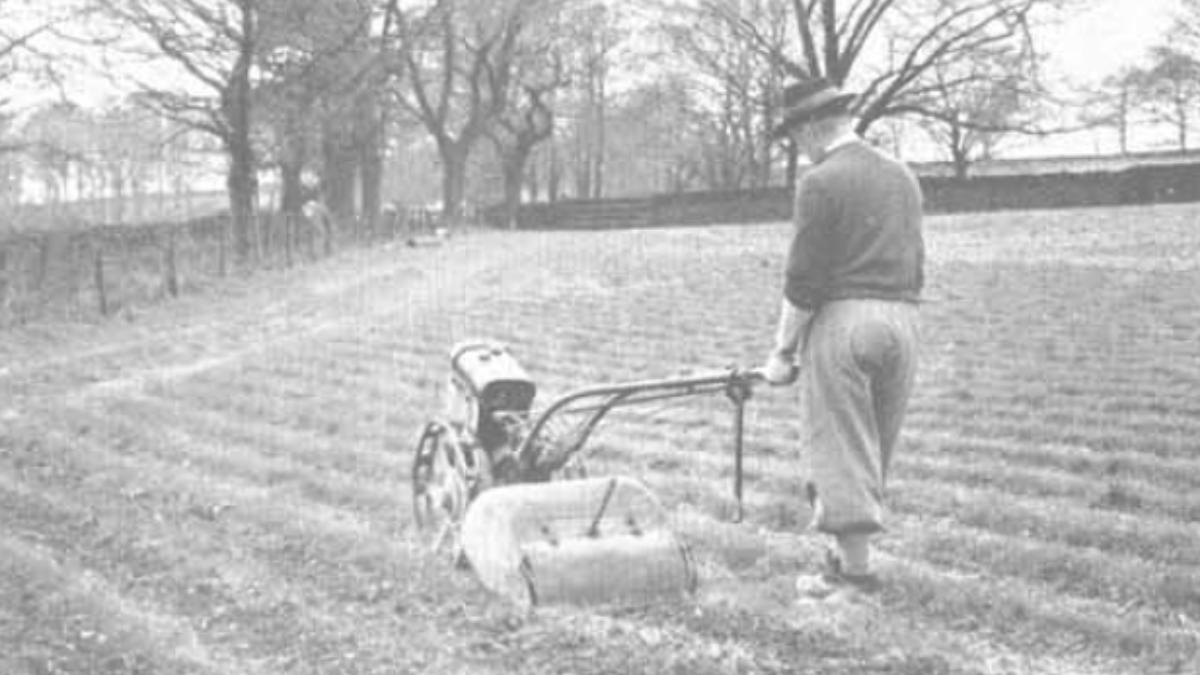
Motor mowing machines of the back roller drive type may have to be employed owing to shortage of manual labour but every effort should be made to retain hand machines or alternatively use a motor unit which hauls a gang of hand units. Alternate use of hand and motor machines may be used in some cases. On tees and approaches, however, the motor machine and power driven rough cuts should prove valuable labour savers. On fairways cutting is again of first importance in relation to the quality of the turf, quite apart from maintaining the course in playable condition. Power cutting for banks, surrounds, semi-rough and rough, must not be neglected and immediate expenditure on a suitable implement, upon which the Research Station can give advice, would in many cases be well justified. Fuel restrictions may interfere to a varying extent with power mowing and other forms of fuel such as producer gas may have to be considered. Even the horse must not be neglected in an effort to keep the course playable.
Reductions in the size of greens and the narrowing of fairways by the development of a strip of semi-rough, so far as existing bunkering and lay-out will permit, will reduce not only the actual amount of cutting but also the quantity of materials, for examples fertilisers, sand, composts and other top dressings necessary for maintenance.
Fertiliser treatment requires very careful consideration and there is a tendency for it to receive the first “cut”. Already there is some scarcity of products such as bone products and potash compounds and later there may be a shortage of phosphatic fertilisers, including superphosphate. Nitrate of soda may be in short supply owing to restricted imports although it is hoped there will be ample supplies of sulphate of ammonia.
Soil cultivation, composting, sanding, forking and scarification must not be neglected, but here the limiting factor is largely the labour available. Once more advantage must be taken of mechanised implements particularly mechanical spiking machines, many of which can be operated quite easily by a boy. Those clubs having a carefully organised compost supply and good reserves will be well placed and will reap the benefit of their methodical habits. Others may find that considerable reductions have to be made in this form of dressing. The supplies available will depend upon local circumstances.
Insect pest and fungal disease attack must be carefully watched so as to obviate the need for extensive, and often expensive, control measures. Leather jackets and Fusarium Patch disease are the most likely attackers and every greenkeeper and every Secretary, Chairman or Convener of the Green Committee should be familiar with the early symptoms of attack and lose no time in submitting specimens or samples to the Research Station for examination and report. Disease, unless checked, can easily cause serious damage to turf. Stocks of controlling agents such as orthodichlorobenzene emulsion for leather jackets and malachite green and bordeaux mixture for Fusarium Patch disease should be maintained as then action may be taken immediately. The prices of mercurial, lead arsenate and many other controlling agents have risen and the relative costs of different treatments have changed since war broke out.
Worming is an operation which may have to be neglected and, therefore, great care must be taken that the general management adopted is not conducive to earthworm invasion.
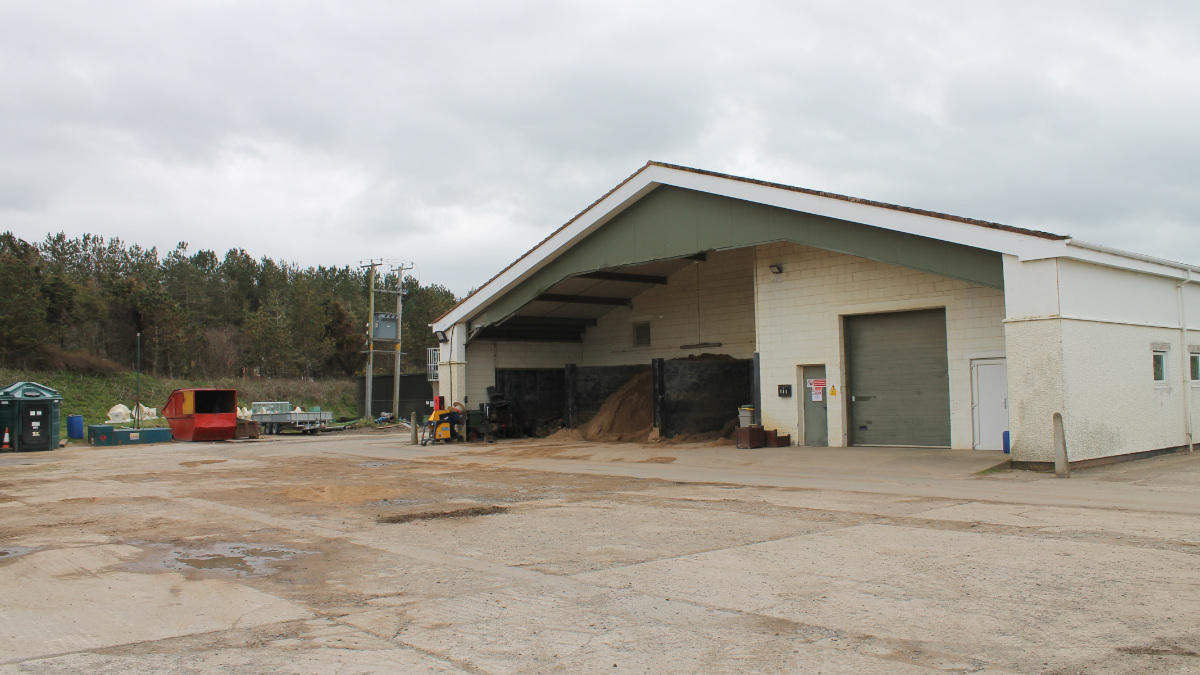
Sheep grazing on courses with consequent control of leaf growth is a valuable contribution towards the home production of food stuffs and as pointed out in the statement on ploughing-up, clubs are expected, in fact can be compelled, under certain circumstances, to graze sheep. A few points should, therefore be mentioned. Sheep grazing will do much to keep down the growth but will not altogether replace cutting. The sheep also will tend to keep weeds, especially ribwort plantains, in subjection. The greatest damage is likely to occur from scalding on the greens and the breaking down of bunkers, built up tees and banks. Sheep often select certain greens for sleeping and the scalding nuisance can be mitigated by fencing these greens with light post and wire fencing during the night, removing it in the morning in readiness for play. The boundary fences of the course will need attention to prevent straying and on courses where the total area can be divided by a reasonable amount of fencing into two, three or more areas it will facilitate the control of the grazing. The possibilities of electric fencing are being investigated at the Research Station. The number of sheep carried depends entirely upon the type of turf and may be regulated according to the season but the number must be restricted so as to avoid excessive damage and poaching (puddling) of the soil. This is especially important on heavy land courses.
Where lead arsenate has been used for earthworm or leather jacket control there is little likelihood of injury to the grazing stock provided the material has been well washed into the soil, but in every case the owner of the stock should be informed of its use.
It is considered that sheep grazing, and sheep very definitely in preference to cattle, offers to clubs the most suitable opportunity of adding their effort to the successful prosecution of the war and committees should take active steps to let the grazing. Whilst at present the rental would be a welcome addition to the club exchequer the possibility of offering the grazing free or carrying only a rent sufficient to cover any costs directly incurred should not be overlooked.
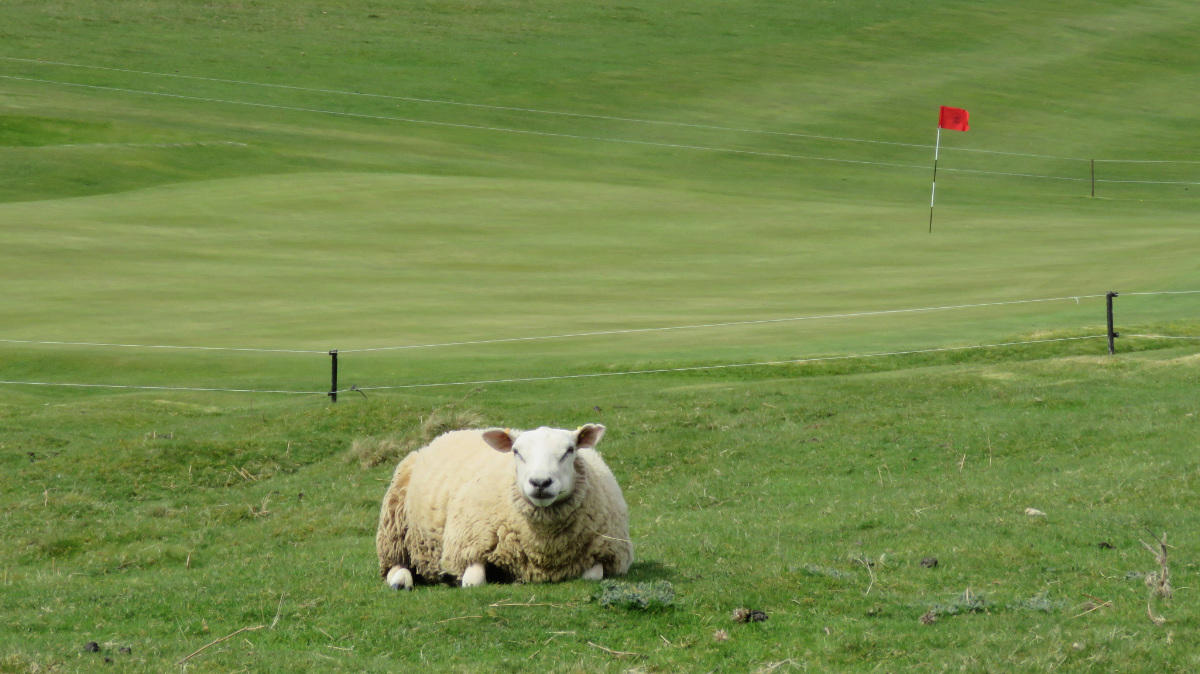
On many courses the rough produces a luxuriant type of growth necessitating frequent cutting. Rather than allow it to become a hay crop causing inconvenience and requiring cutting by the ground staff it should if at all possible be offered to adjacent farmers for silage making. Silage is likely to become a very useful source of home grown live stock food and for its production the grass is cut when about 6 in. to 9 in. high. This would save much valuable labour for other work on the course.
Many Committees will be considering what they can do to help the home grown food campaign. The pros and cons of large scale cereal, crop or vegetable production are discussed elsewhere in the Journal, and it is not considered that the majority of golf clubs are in a position to undertake the work in a satisfactory manner, mainly because of lack of knowledge, lack of equipment and unsuitable soil types. Much can be done, however, to ease club expenses on the catering side and supplement the food supply by growing sufficient vegetables at least to supply the needs of the club house. Efforts should be devoted to quick growing greens and salad vegetables for roots, carrots, beetroots and swedes for autumn, winter and early spring consumption.
In conclusion we would suggest that the best motto to be adopted by a club Committee at the present time is the old proverb “Where there’s a will there’s a way.”
This abridged text was taken from the Journal of the Board of Greenkeeping Research, available in full on the Turfgrass Information Center.
You can find out more about the History of Greenkeepers’ Associations on the BIGGA website.
Author

Karl Hansell
Karl has been head of communications for BIGGA since March 2016. His duties include editing the monthly Greenkeeper International magazine, in addition to other communications activities for the association.
